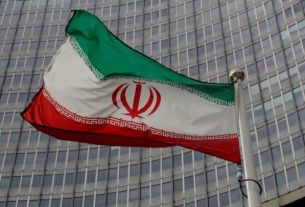Households across Austria are bracing for a major hit to their wallets as the Chamber of Labor (AK) warns of a potential surge in electricity bills due to the costly expansion of the country’s power grids. Without swift government intervention, this essential infrastructure upgrade could leave households shouldering a financial burden that could grow exponentially over the next few years.
While the cost of electricity itself makes up a significant part of the bill, it’s the network fees—often less visible but just as impactful—that are causing the greatest concern. In 2024, the average Austrian household consuming 3,500 kilowatt-hours (kWh) of electricity is expected to pay around 300 euros in grid fees alone. But this figure is set to rise sharply, experts warn.
Massive Hikes Expected in 2025
Looking ahead, AK economist Joel Tölgyes predicts a grim outlook for 2025, forecasting a minimum increase of 20 percent in grid fees. Some industry insiders are even sounding the alarm for hikes as steep as 30 percent. For a typical family, that could mean grid fees jumping to between 360 and 400 euros by next year, with no signs of slowing down.
These charges, often referred to as network tariffs, reflect the costs incurred by regional grid operators such as Wiener Netze and Netze NÖ for maintaining and upgrading the power infrastructure. Every year, operators submit their operating costs to E-Control, the regulatory authority that assesses the charges for compliance and fairness. Once approved, these costs are redistributed among electricity consumers, with fees varying by region.
Though the official numbers won’t be released until December, the AK has access to preliminary calculations and is confident that the trend of rising costs will continue. As part of their role in representing workers, they have legal access to the figures, though bound by confidentiality.
Costs Could Double by 2030
The Chamber of Labor predicts an even more alarming scenario: by 2030, grid fees for an average household could double, soaring to 600 euros. The driving force behind this surge is Austria’s ambitious energy transition. The country is making a major shift from fossil fuels to renewable energy, which requires significant upgrades to the electricity grid, particularly to accommodate increased demand from electric vehicles and heat pumps. By 2030, the AK estimates electricity consumption could spike by as much as 30 percent, necessitating a more robust and resilient power grid.
Austrian Power Grid (APG), the entity responsible for the country’s high-voltage transmission networks, has laid out an investment plan of 9 billion euros by 2034 to ensure the grid can handle the future load. However, when you add in the cost of expanding local and regional networks, the AK projects a total investment of nearly 19.7 billion euros by 2034. By 2040, these costs could skyrocket to 44 billion euros.
Households Shoulder the Lion’s Share of Grid Costs
Despite using only 27 percent of the nation’s electricity, private households are currently responsible for 44 percent of network fees, placing a disproportionate financial burden on average consumers. In contrast, businesses, which consume 43 percent of the electricity, pay a nearly equivalent 42 percent of the grid fees. The industrial sector, which consumes 30 percent of the power, enjoys a much more favorable arrangement—only paying 14 percent of the network fees.
This imbalance has sparked criticism from the AK, which points out the inequitable distribution of costs between electricity producers and consumers. Power producers are only responsible for a mere 9.4 percent of grid costs, while consumers, ranging from households to industrial users, are left to cover the remaining 90.6 percent.
AK Demands Fairer Cost Distribution
In response to these disparities, the Chamber of Labor is calling for a more equitable distribution of grid costs. They argue that power producers, large-scale consumers, and even international electricity transit companies should bear a greater share of the burden. Furthermore, the AK emphasizes the need for stronger protections for low-income households, who are particularly vulnerable to steep rises in electricity fees.
To help cushion the blow, the AK is advocating for state co-financing of the grid expansion. By leveraging government-backed loans and spreading the repayment period over multiple decades, they argue that the financial impact on today’s consumers could be significantly reduced. This approach would ensure that future grid users also contribute to the costs of a stronger, more efficient power network.
“The idea is to tap into favorable state loan terms, which would allow for longer loan repayment periods. This would help distribute the costs of grid expansion across generations, reducing the immediate pressure on consumers,” explained a spokesperson from the AK.
As grid fees are projected to continue their steep rise, the Chamber of Labor’s proposals offer a crucial lifeline for households facing an increasingly unsustainable financial burden. Without intervention, Austria’s energy transition, while essential, risks leaving many households behind.





